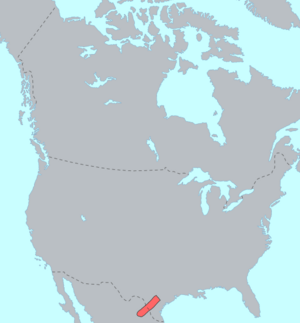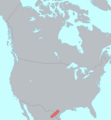Coahuilteco language facts for kids
Quick facts for kids Coahuilteco |
||||
|---|---|---|---|---|
| Native to | Mexico, United States | |||
| Region | Coahuila, Texas | |||
| Ethnicity | Quems, Pajalat, etc. | |||
| Extinct | not attested after 18th century | |||
| Language family |
Hokan ?
|
|||
| Dialects |
Pajalat
|
|||
| Linguist List | xcw | |||

Coauhuilteco language
|
||||
|
||||
Coahuilteco was a language spoken long ago in parts of southern Texas (United States) and northeastern Coahuila (Mexico). Sadly, it is now an extinct language, meaning no one speaks it anymore. It was part of a group of languages called Pakawan languages.
What is Coahuilteco?
Coahuilteco was the language of several Native American groups. These groups lived in what is now Texas and Mexico. We know about this language mostly from old documents. One important document was written by a priest named Fray Bartolomé García in 1760. This book helped people understand how the language worked.
How Coahuilteco is Grouped
When people study languages, they often try to group them into families. This is like how your family has different members, but you are all related. For Coahuilteco, scientists have different ideas about its language family.
- Some experts, like John Wesley Powell, thought Coahuilteco was part of a family called "Coahuiltecan."
- Later, other experts, like Edward Sapir, suggested this family was even bigger.
- However, some, like Ives Goddard, were not sure if these connections were strong enough. They thought Coahuilteco might be a "language isolate." This means it wouldn't be closely related to any other known language.
- More recently, a scientist named Manaster Ramer suggested that Powell's original idea of a smaller family was correct. He called this group "Pakawan."
- Still, other experts, like Campbell, disagree. They believe there isn't enough proof to connect Coahuilteco to these other languages. They think some similar words might just be borrowed from other languages.
So, while Coahuilteco is gone, experts are still trying to figure out its place in the big family tree of languages!
Images for kids
See also
 In Spanish: Idioma coahuilteco para niños
In Spanish: Idioma coahuilteco para niños


